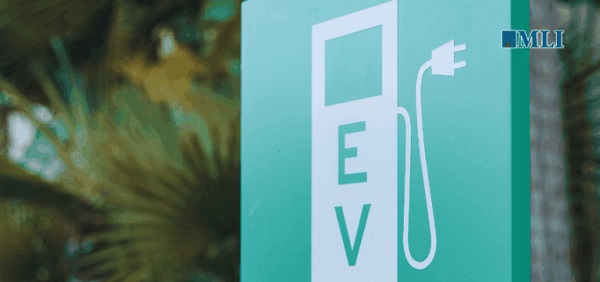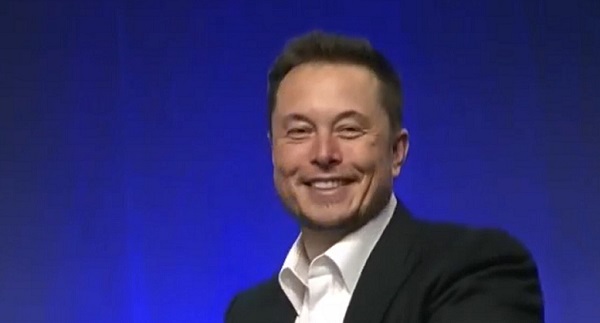Automotive
‘Net-zero’ targets neither feasible nor realistic

From the Fraser Institute
By Vaclav Smil and Elmira Aliakbari
Canada and other developed countries have committed to achieving “net-zero” carbon emissions by 2050. Yet here at the midway point between the 1997 Kyoto Protocol, the first international treaty to set binding targets for cutting greenhouse gas emissions, and the looming deadline of 2050, recent findings cast doubt on the feasibility of this ambitious transition.
According to a new study published by the Fraser Institute, despite international agreements, significant government spending and regulations, and some technological progress, the world’s dependence on fossil fuels has been steadily and significantly increasing over the past three decades. By 2023, global fossil fuel consumption was 55 per cent higher than in 1997. The share of fossil fuels in global energy consumption has only slightly decreased, dropping from nearly 86 per cent in 1997 to approximately 82 per cent in 2022.
Viewed through a historical lens, this sluggish pace of change is not surprising. The first global energy transition, from traditional biomass fuels (wood, charcoal, straw) to fossil fuels, started more than two centuries ago and unfolded gradually. Coal only surpassed global wood consumption in 1900; crude oil surpassed coal only in the mid-1960s; and natural gas has yet to surpass crude oil. Even today, this transition remains incomplete, as billions of people still rely on traditional biomass energy for cooking and heating.
The scale of the energy transition ahead is daunting. The 19th-century transition from wood to coal and hydrocarbons replaced about 1.5 billion tons of wood, equivalent to 30 exajoules. But the current transition will require at least 400 exajoules of new non-carbon energies by 2050. To put this in a Canadian perspective, generating this amount of clean energy worldwide would require the equivalent of about 22,000 projects the size of British Columbia’s Site C or Newfoundland and Labrador’s Muskrat Falls.
Advocates for today’s mandated energy transition often overlook the complexity of energy transitions and their many challenges. Critical industries such as cement, primary iron, plastics and ammonia still rely heavily on fossil fuels, with no viable alternatives readily available for large-scale adoption.
The energy transition also imposes unprecedented demands for minerals vital for renewable energy technologies, such as copper and lithium, which require substantial time to mine and develop. According to the International Energy Agency, the widespread adoption of electric vehicles by 2040 will require more than 40 times more lithium and up to 25 times more cobalt, nickel and graphite than the world was producing in 2020. Assuming such scale is even possible, there are serious questions about whether mineral and metal production can expand nearly quickly enough to meet the 2050 deadline.
Transitioning to a net-zero carbon footprint also requires a massive overhaul of existing energy infrastructure, as well as development of new systems and technologies, all of which will be very costly. High-income countries (including Canada) would need to allocate between 20 and 25 per cent of their annual incomes (broadly measured as GDP) to the transition. That would create significant economic challenges for citizens in terms of living standards.
A final problem is that achieving decarbonization by 2050 hinges on extensive and sustained global cooperation, a difficult task given the conflicting political, strategic and economic interests of different countries. In 2024 it’s not easy to imagine how the major countries can coordinate their decarbonization efforts. The European Union and the United States are already reducing emissions. But China and India are still increasing their coal combustion and have decades of emissions growth ahead of them, while Russia’s economic stability depends on exporting fossil fuels. And low-income African countries are expanding their fossil fuel consumption to build infrastructure and lift their living standards to alleviate poverty.
After two centuries of rising global carbon emissions, the goal of zero carbon by 2050 faces significant economic, political and practical obstacles. Severing modern civilization’s reliance on fossil fuels may be a desirable long-term goal but it simply cannot be accomplished either rapidly or inexpensively.
Authors:
Automotive
The high price of green virtue

By Jerome Gessaroli for Inside Policy
Reducing transportation emissions is a worthy goal, but policy must be guided by evidence, not ideology.
In the next few years, the average new vehicle in British Columbia could reach $80,000, not because of inflation, but largely because of provincial and federal climate policy. By forcing zero-emission-vehicle (ZEV) targets faster than the market can afford, both governments risk turning climate ambition into an affordability crisis.
EVs are part of the solution, but mandates that outpace market acceptance risk creating real-world challenges, ranging from cold-weather travel to sparse rural charging to the cost and inconvenience for drivers without home charging. As Victoria and Ottawa review their ZEV policies, the goal is to match ambition with evidence.
Introduced in 2019, BC’s mandate was meant to accelerate electrification and cut emissions from light-duty vehicles. In 2023, however, it became far more stringent, setting the most aggressive ZEV targets in North America. What began as a plan to boost ZEV adoption has now become policy orthodoxy. By 2030, automakers must ensure that 90 per cent of new light-duty vehicles sold in BC are zero-emission, regardless of what consumers want or can afford. The evidence suggests this approach is out of step with market realities.
The province isn’t alone in pursuing EV mandates, but its pace is unmatched. British Columbia, Quebec, and the federal government are the only ones in Canada with such rules. BC’s targets rise much faster than California’s, the jurisdiction that usually sets the bar on green-vehicle policy, though all have the same goal of making every new vehicle zero-emission by 2035.
According to Canadian Black Book, 2025 model EVs are about $17,800 more expensive than gas-powered vehicles. However, ever since Ottawa and BC removed EV purchase incentives, sales have fallen and have not yet recovered. Actual demand in BC sits near 16 per cent of new vehicle sales, well below the 26 per cent mandate for 2026. To close that gap, automakers may have to pay steep penalties or cut back on gas-vehicle sales to meet government goals.
The mandate also allows domestic automakers to meet their targets by purchasing credits from companies, such as Tesla, which hold surplus credits, transferring millions of dollars out of the country simply to comply with provincial rules. But even that workaround is not sustainable. As both federal and provincial mandates tighten, credit supplies will shrink and costs will rise, leaving automakers more likely to limit gas-vehicle sales.
It may be climate policy in intent, but in reality, it acts like a luxury tax on mobility. Higher new-vehicle prices are pushing consumers toward used cars, inflating second-hand prices, and keeping older, higher-emitting vehicles on the road longer. Lower-income and rural households are hit hardest, a perverse outcome for a policy meant to reduce emissions.
Infrastructure is another obstacle. Charging-station expansion and grid upgrades remain far behind what is needed to support mass electrification. Estimates suggest powering BC’s future EV fleet alone could require the electricity output of almost two additional Site C dams by 2040. In rural and northern regions, where distances are long and winters are harsh, drivers are understandably reluctant to switch. Beyond infrastructure, changing market and policy conditions now pose additional risks to Canada’s EV goals.
Major automakers have delayed or cancelled new EV models and battery-plant investments. The United States has scaled back or reversed federal and state EV targets and reoriented subsidies toward domestic manufacturing. These shifts are likely to slow EV model availability and investment across North America, pushing both British Columbia and Ottawa to reconsider how realistic their own targets are in more challenging market conditions.
Meanwhile, many Canadians are feeling the strain of record living costs. Recent polling by Abacus Data and Ipsos shows that most Canadians view rising living costs as the country’s most pressing challenge, with many saying the situation is worsening. In that climate, pressing ahead with aggressive mandates despite affordability concerns appears driven more by green ideology than by evidence. Consumers are not rejecting EVs. They are rejecting unrealistic timelines and unaffordable expectations.
Reducing transportation emissions is a worthy goal, but policy must be guided by evidence, not ideology. When targets become detached from real-world conditions, ideology replaces judgment. Pushing too hard risks backlash that can undo the very progress we are trying to achieve.
Neither British Columbia nor the federal government needs to abandon its clean-transportation objectives, but both need to adjust them. That means setting targets that match realistic adoption rates, as EVs become more affordable and capable, and allowing more flexible compliance based on emissions reductions rather than vehicle type. In simple terms, the goal should be cutting emissions, not forcing people to buy a specific type of car. These steps would align ambition with reality and ensure that environmental progress strengthens, rather than undermines, public trust.
With both Ottawa and Victoria reviewing their EV mandates, their next moves will show whether Canadian climate policy is driven by evidence or by ideology. Adjusting targets to reflect real-world affordability and adoption rates would signal pragmatism and strengthen public trust in the country’s clean-energy transition.
Jerome Gessaroli is a senior fellow at the Macdonald-Laurier Institute and leads the Sound Economic Policy Project at the BC Institute of British Columbia
Automotive
Elon Musk Poised To Become World’s First Trillionaire After Shareholder Vote


From the Daily Caller News Foundation
At Tesla’s Austin headquarters, investors backed Musk’s 12-step plan that ties his potential trillion-dollar payout to a series of aggressive financial and operational milestones, including raising the company’s valuation from roughly $1.4 trillion to $8.5 trillion and selling one million humanoid robots within a decade. Musk hailed the outcome as a turning point for Tesla’s future.
“What we’re about to embark upon is not merely a new chapter of the future of Tesla but a whole new book,” Musk said, as The New York Times reported.
Dear Readers:
As a nonprofit, we are dependent on the generosity of our readers.
Please consider making a small donation of any amount here.
Thank you!
The decision cements investor confidence in Musk’s “moonshot” management style and reinforces the belief that Tesla’s success depends heavily on its founder and his leadership.
Tesla Annual meeting starting now
https://t.co/j1KHf3k6ch— Elon Musk (@elonmusk) November 6, 2025
“Those who claim the plan is ‘too large’ ignore the scale of ambition that has historically defined Tesla’s trajectory,” the Florida State Board of Administration said in a securities filing describing why it voted for Mr. Musk’s pay plan. “A company that went from near bankruptcy to global leadership in E.V.s and clean energy under similar frameworks has earned the right to use incentive models that reward moonshot performance.”
Investors like Ark Invest CEO Cathie Wood defended Tesla’s decision, saying the plan aligns shareholder rewards with company performance.
“I do not understand why investors are voting against Elon’s pay package when they and their clients would benefit enormously if he and his incredible team meet such high goals,” Wood wrote on X.
Norway’s sovereign wealth fund, Norges Bank Investment Management — one of Tesla’s largest shareholders — broke ranks, however, and voted against the pay plan, saying that the package was excessive.
“While we appreciate the significant value created under Mr. Musk’s visionary role, we are concerned about the total size of the award, dilution, and lack of mitigation of key person risk,” the firm said.
The vote comes months after Musk wrapped up his short-lived government role under President Donald Trump. In February, Musk and his Department of Government Efficiency (DOGE) team sparked a firestorm when they announced plans to eliminate the U.S. Agency for International Development, drawing backlash from Democrats and prompting protests targeting Musk and his companies, including Tesla.
Back in May, Musk announced that his “scheduled time” leading DOGE had ended.
-

 Business2 days ago
Business2 days agoFederal major projects list raises questions
-

 COVID-192 days ago
COVID-192 days agoCrown seeks to punish peaceful protestor Chris Barber by confiscating his family work truck “Big Red”
-

 International14 hours ago
International14 hours agoAfghan Ex–CIA Partner Accused in D.C. National Guard Ambush
-

 Agriculture1 day ago
Agriculture1 day agoHealth Canada indefinitely pauses plan to sell unlabeled cloned meat after massive public backlash
-

 International1 day ago
International1 day agoAmerica first at the national parks: Trump hits Canadians and other foreign visitors with $100 fee
-

 Alberta12 hours ago
Alberta12 hours agoAlberta and Ottawa ink landmark energy agreement
-

 Indigenous2 days ago
Indigenous2 days agoCanadian mayor promises to ‘vigorously defend’ property owners against aboriginal land grab
-

 International23 hours ago
International23 hours agoTrump Admin Pulls Plug On Afghan Immigration Following National Guard Shooting












